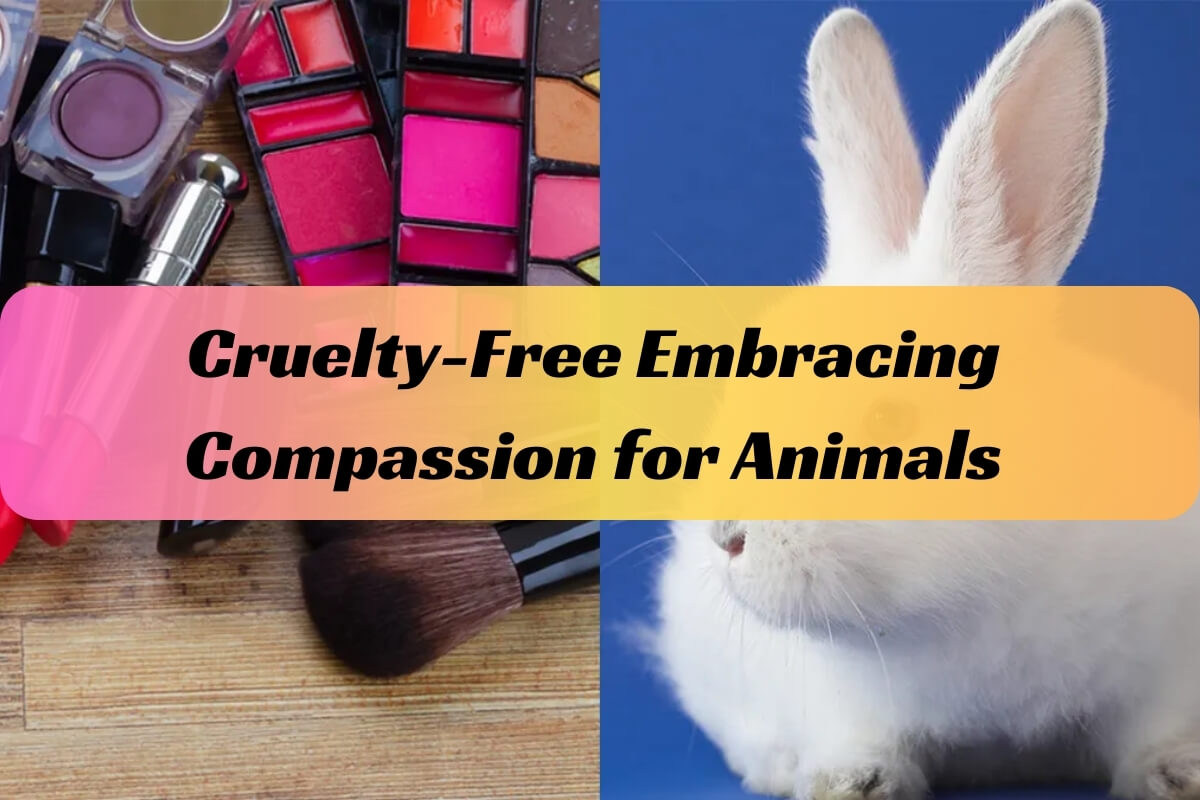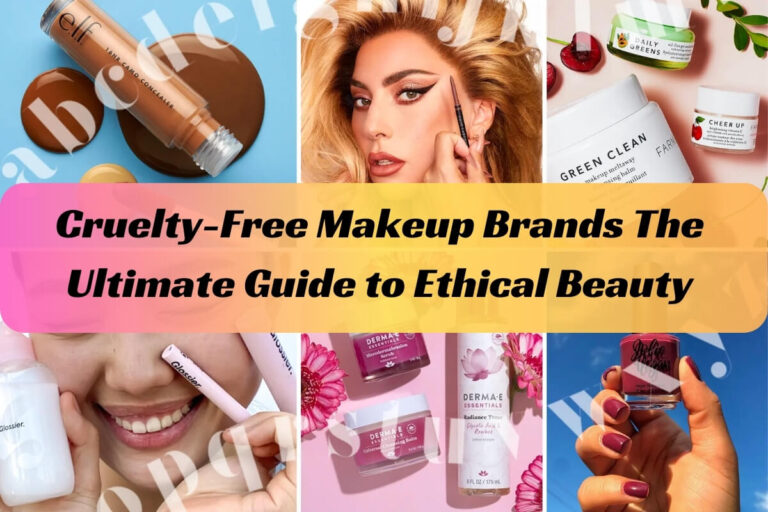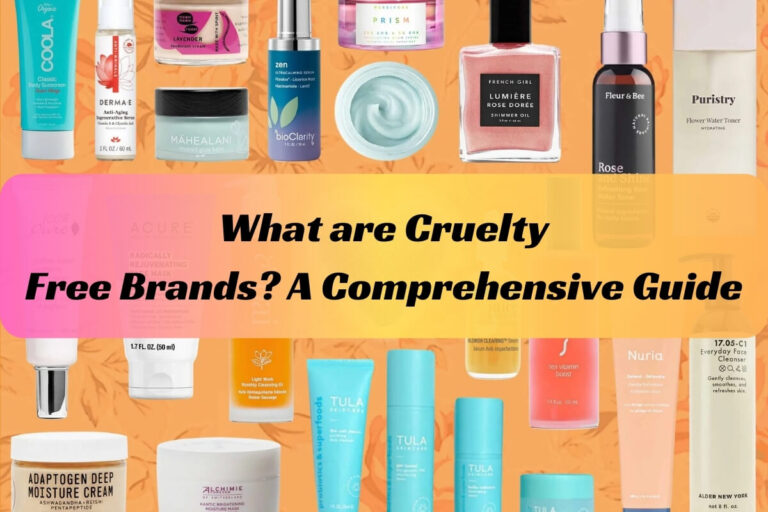Cruelty-Free: Embracing Compassion for Animals

Have you ever wondered about the cruelty behind many common household and personal care products? The term “cruelty-free” has become increasingly prominent, reflecting a growing movement towards ethical and compassionate consumerism. In this comprehensive guide, we’ll explore the meaning of “cruelty-free,” its history, alternatives to animal testing, certifications, consumer choices, and how to embrace a truly compassionate lifestyle.
What Does “Cruelty-Free” Really Mean?
The term “cruelty-free” refers to products or activities that do not involve harming or killing animals. This label applies to items that have not been tested on animals in their final form and focuses on the ethical treatment of animals during the production and testing processes.
Cruelty-free is different from vegan. Vegan products don’t contain animal-derived ingredients, but cruelty-free products might include ingredients like beeswax, honey, or lanolin. Cruelty-free means no animal testing but may include animal by-products.
Several organizations, such as Leaping Bunny, PETA, and Cruelty-Free International, verify and certify cruelty-free companies and products. These certifications provide consumers with peace of mind when making ethical purchasing decisions.
The History of Cruelty-Free Initiatives
The cruelty-free movement has its roots in early animal welfare advocacy efforts. In the 1950s, Lady Dowding persuaded manufacturers of faux fur to use the label “Beauty Without Cruelty,” eventually founding the charity of the same name in 1959. The term “cruelty-free” gained further traction in the United States during the 1970s, thanks to the efforts of Marcia Pearson and her group, Fashion With Compassion.
Significant legislative milestones have also shaped the cruelty-free landscape. In 1998, the United Kingdom banned animal testing for cosmetics, setting a precedent for other countries to follow. The European Union later introduced stricter regulations, leading to a widespread shift toward cruelty-free practices among cosmetics companies.
As consumer awareness and demand for ethical products grew, more companies embraced cruelty-free practices, further driving the movement’s momentum.
Animal Testing in the Cosmetics and Household Products Industry
Traditional animal testing practices in the cosmetics and household products industry have been widely criticized for their cruelty and lack of ethical considerations. Common tests involve forcing animals like rabbits, rats, mice, and guinea pigs to ingest or inhale substances, or having ingredients rubbed onto their shaved skin, eyes, or ears daily for extended periods.
These tests can cause severe distress, allergic reactions, blindness, bleeding, and even death in the animals involved. Additionally, pregnant animals are often subjected to these tests, leading to the suffering and loss of both the mother and her unborn offspring.
Primates, dogs, and cats are also used in invasive experiments, further raising ethical concerns about the necessity and justification of such practices.
Cruelty-Free Alternatives and Innovations
As technology advances, outdated animal testing methods are being replaced by quicker, more accurate, and more humane alternatives. Reconstructed human epidermis, derived from donated human skin, can replace the controversial Draize skin test on rabbits, providing more relevant data on human reactions.
In vitro (test-tube) techniques using human tissue cultures have also proven effective in replacing the Draize eye test. Computer-based systems allow for the isolation and testing of specific tissues or organs in a controlled environment, reducing the need for animal testing while enhancing precision and accuracy.
Additionally, companies can opt to use ingredients that have already been established as safe, drawing from extensive databases like the one maintained by the European Union, which contains information on over 20,000 ingredients.
The Cruelty-Free Market and Consumer Choices
Consumers today have a wide range of cruelty-free options to choose from, including cosmetics, personal care products, household cleaners, clothing, shoes, condoms, and candles. Organizations like PETA, Choose Cruelty-Free, and the Coalition for Consumer Information on Cosmetics (CCIC) provide lists of cruelty-free and cruel products, empowering consumers to make informed choices.
The Leaping Bunny Program, launched in the 1996s, remains the only internationally recognized third-party cruelty-free certification program, ensuring that certified companies and products adhere to strict standards throughout their supply chain.
Recognizing Cruelty-Free Labels and Certifications
While some manufacturers use labels like “not tested on animals,” “cruelty-free,” or “against animal testing” on their products, it’s crucial to understand that these claims can be misleading. There are no clear legal definitions for these terms, and they may be applied inconsistently or deceptively.
To ensure you’re truly supporting cruelty-free practices, look for products certified by reputable organizations like Leaping Bunny, PETA, or Choose Cruelty-Free. These certifications provide transparency and assurance that the product meets stringent cruelty-free standards throughout its entire supply chain.
Be aware that some certifications or label claims may be controversial or misleading due to lack of regulation, leading to greenwashing or false advertising.
Going Beyond Cruelty-Free: Living a Compassionate Lifestyle
Choosing cruelty-free products is a significant step, but a truly compassionate lifestyle also involves making ethical choices in other areas.
Adopting a vegan diet, which eliminates all animal-derived foods like meat, dairy, and eggs, is one of the most direct ways to help animals and reduce the demand for their exploitation. Supporting animal welfare organizations through donations or volunteering can also make a meaningful impact.
Avoid zoos, circuses, and other forms of animal entertainment that involve confinement or mistreatment. Support animal-free entertainment options like Cirque du Soleil.
The Future of Cruelty-Free and Animal Testing Policies
The cruelty-free movement continues to gain momentum, with ongoing legislative efforts and corporate responsibility initiatives aimed at phasing out animal testing and embracing ethical alternatives.
Many countries and regions, including the European Union, India, and several states in the United States, have implemented or are considering bans on animal testing for cosmetics. Companies are also taking proactive steps to implement cruelty-free policies and invest in alternative testing methods.
Emerging technologies, such as organ-on-a-chip systems and advanced computer modeling, offer promising avenues for more accurate and humane testing approaches. Continued research and innovation in this field will further support the transition toward a cruelty-free future.
By making conscious choices as consumers and advocating for legislative changes, we can collectively contribute to a world where compassion and ethical practices are the norm, rather than the exception.



